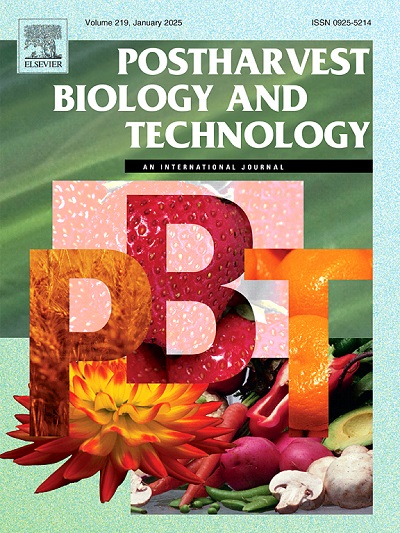Phenylalanine enhances the efficiency of sodium dehydroacetate to control citrus fruit decay by stimulating reactive oxygen metabolism and phenylpropanoid pathway
IF 6.4
1区 农林科学
Q1 AGRONOMY
引用次数: 0
Abstract
Postharvest citrus fruit are susceptible to decay and quality deterioration during storage. In this study, the addition of phenylalanine (Phe) to sodium dehydroacetate (SD) treatment on citrus fruit decay was investigated. Results showed that the addition of 1 g L−1 Phe significantly improved the controlling efficiency of SD to citrus green mold incidence and natural rot diseases, which displayed a comparable level to that of imazalil and effectively maintained the fruit quality parameters including weight loss, titratable acid, vitamin C, and firmness. Meanwhile, addition of Phe could drastically reduce the contents of hydrogen peroxide, superoxide anion, and malondialdehyde by increasing the activities of catalase, superoxide dismutase, peroxidase, glutathione reductase, dehydroascorbate reductase, monodehydroascorbate reductase, ascorbate peroxidase and the levels of glutathione and ascorbic acid. It could also improve the activities of phenylalanine ammonia-lyase, cinnamate-4-hydroxylase and 4-coumarate coenzyme A ligase and the phenolic and flavonoid levels. These results suggested that Phe could improve the controlling efficiency of SD to citrus fruit decay through stimulation of reactive oxygen species (ROS) metabolism and phenylpropanoid pathway.
求助全文
约1分钟内获得全文
求助全文
来源期刊

Postharvest Biology and Technology
农林科学-农艺学
CiteScore
12.00
自引率
11.40%
发文量
309
审稿时长
38 days
期刊介绍:
The journal is devoted exclusively to the publication of original papers, review articles and frontiers articles on biological and technological postharvest research. This includes the areas of postharvest storage, treatments and underpinning mechanisms, quality evaluation, packaging, handling and distribution of fresh horticultural crops including fruit, vegetables, flowers and nuts, but excluding grains, seeds and forages.
Papers reporting novel insights from fundamental and interdisciplinary research will be particularly encouraged. These disciplines include systems biology, bioinformatics, entomology, plant physiology, plant pathology, (bio)chemistry, engineering, modelling, and technologies for nondestructive testing.
Manuscripts on fresh food crops that will be further processed after postharvest storage, or on food processes beyond refrigeration, packaging and minimal processing will not be considered.
 求助内容:
求助内容: 应助结果提醒方式:
应助结果提醒方式:


